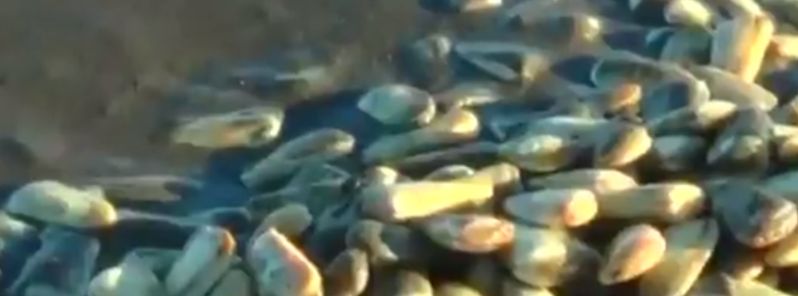Unprecedented toxic red algal bloom severely impacts Los Lagos, Chile

The southern area of Los Lagos, Chile, has been affected by the unprecedented red algal bloom over the last month. The phenomenon has caused thousands of local fishermen to protest the government's "insufficient" effort to alleviate the economic effects.
The red tide toxic algal bloom is generally not unusual in southern Chile. However, this years' event is the largest ever recorded, and in addition to El Neiño, the artisanal fishing union considers the Chile's farmed salmon industry responsible. Chile's Sernapesca fisheries bodies and other experts don't agree with the explanation.
The bloom affects the mussels, hake, and the fish throughout the affected area making them essentially poisonous. As such, the bloom places a great deal of economic pressure on the region.
Chile: Fishermen protest after record losses due to red tide. pic.twitter.com/zbxunKUvkC
— teleSUR English (@telesurenglish) May 4, 2016
Thousands of mollusks have already been found infected by the red tide on the Chiloe island. According to the Chilean Navy, the mollusks and some lesser amounts of crabs were stranded in Playa Grande de Cucao, Huentemo, and Chanquin. The mollusks were inspected by the Chilean Health Authorities and were found to be contaminated. The people have been warned not to consume them.
The algal bloom is capable of producing toxins, poisonous to marine life, and various chemicals can induce respiratory stress, such as coughing and wheezing in the people.
TOXIC RED TIDE infects 1000s of molluscs, including clams, mussels & crabs, in southern Chile pic.twitter.com/rLqbfEy0U6
— Press TV (@PressTV) April 28, 2016
Despite the government's efforts which include the offer to pay 100 000 pesos ($151) to the affected families, the fishermen are not happy.
“What the government announced is not going to work for us. In no way can we live on 100 000 pesos” said fisherwoman Doris Santana.
“What we are having here is a silent catastrophe, one that affects a lot of people and a vast territory,” said Leonardo de la Prida Sanhueza, the regional governor.
The bill for creating the National Sustainable Development of Artisanal Fisheries and Small Scale Aquaculture (INDESPA) was approved on April 3, 2016, as one response to the crisis.
"Here the key is that we are building a new instrument that aims to solve the problems faced by the fishing activity and aims to productively diversify the fisheries activity in the country," said the undersecretary," said Raul Sunico, the Undersecretary of Fisheries and Aquaculture.
Featured image: Red tide toxic algal bloom in southern Chile, April 27, 2016. Image credit: @PressTV

Commenting rules and guidelines
We value the thoughts and opinions of our readers and welcome healthy discussions on our website. In order to maintain a respectful and positive community, we ask that all commenters follow these rules.